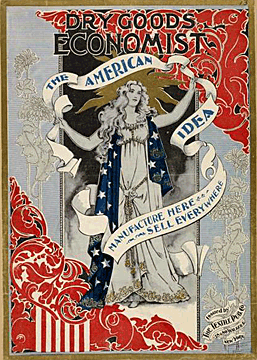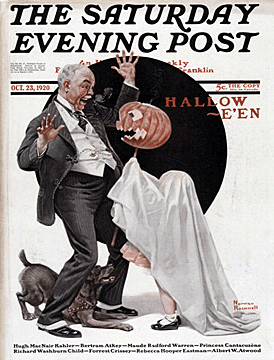A Snapshot in Time
How to Start a Magazine Collection
by Bob Brooke
 It’s
a hot August afternoon as I sit leafing through an old copy of the May
14, 1945 issue of LIFE Magazine, commemorating the end of World
War II in Europe. Gazing at the photos, I’m transported back to that
exciting time when the world thought the war would never end. I read the
stories and imagine myself in Times Square with thousands of other
people on the verge of hysteria as the announcement ticks across the
lighted screen. I think to myself, Wow, this issue must be worth a
fortune! It’s
a hot August afternoon as I sit leafing through an old copy of the May
14, 1945 issue of LIFE Magazine, commemorating the end of World
War II in Europe. Gazing at the photos, I’m transported back to that
exciting time when the world thought the war would never end. I read the
stories and imagine myself in Times Square with thousands of other
people on the verge of hysteria as the announcement ticks across the
lighted screen. I think to myself, Wow, this issue must be worth a
fortune!
This is just one of a bunch of old magazines I discovered in my parents’
basement after my father died. He actually lived that. At the time I was
just two days short of my first birthday. Does this magazine hold a
special interest for me? Sure does. But what about the others? Do I have
the beginnings of a collection or just a pile of old magazines?
Because they’re dated, old magazines, especially those from the first
half of the 20th century, offer a snapshot of a specific time. Reading
the articles, looking at the photos and the advertisements, all give you
a sense of the moment.
History of Old Magazines
 But
before you start collecting them, you need to take a look at how they
originated. In the early 18th century, magazines were more a handier way
to read books. Most people couldn’t afford books, so the idea was to
copy books in sections so that readers could afford to read them. But
only the wealthy educated class could read, and most of them already had
read the books copied in the magazines. So for a while magazines weren’t
very popular. But
before you start collecting them, you need to take a look at how they
originated. In the early 18th century, magazines were more a handier way
to read books. Most people couldn’t afford books, so the idea was to
copy books in sections so that readers could afford to read them. But
only the wealthy educated class could read, and most of them already had
read the books copied in the magazines. So for a while magazines weren’t
very popular.
By the mid-1860s, more people could read, and since books were still
rather expensive, they turned to magazines. Publishers realized the need
for special content in their magazines and either wrote articles
themselves, or paid others to write both them and short fiction pieces.
Articles about politics, religion, farming, and the new mechanical
devices of the Industrial Age appeared.
Giving Your Collection a Focus
 Instead
of randomly collecting magazines that include articles on important
events, you may want to think out your collection based on your
interests. You may well want to collect those about important current
events. But you could also choose to collect those with covers
illustrated by important artists. Norman Rockwell painted many a cover
for The Saturday Evening Post. Even Andrew Wyeth, well known for
his haunting watercolors and tempera paintings of southeastern
Pennsylvania and the coast of Maine, painted one for it. Instead
of randomly collecting magazines that include articles on important
events, you may want to think out your collection based on your
interests. You may well want to collect those about important current
events. But you could also choose to collect those with covers
illustrated by important artists. Norman Rockwell painted many a cover
for The Saturday Evening Post. Even Andrew Wyeth, well known for
his haunting watercolors and tempera paintings of southeastern
Pennsylvania and the coast of Maine, painted one for it.
You may choose to collect magazines for their advertisements. After all,
advertising makes it possible for publishers to print their magazines,
plus it reflects lifestyles at the time of publication. Some people
collect only the first issues of magazines. These, like first editions
of books, can be worth a good bit.
Collecting magazines on a particular topic is another option. You may
want to collect all the magazines that featured articles about World War
II, for example. While LIFE Magazine is probably the most well known for
its dramatic coverage of the War, other magazines also had articles
about all facets of it.
Where to Find Magazines for Your
Collection
So where do you begin buying magazines for your collection? The first
avenue of approach is to go to garage and yard sales. People cleaning
out their attics and garages often have piles of magazines for just a
dollar or two. However, because of T.V. shows dealing with antiques and
collectibles, plus what people see on eBay, these sellers often price up
more popular issues of LIFE and The Saturday Evening Post.
You may also find an occasional bargain in an antique shop that normally
doesn't sell ephemera. The shop owner will have priced the old magazines
on display at a low price to just get ride of them. Most likely, he or
she had to take them as part of a estate liquidation or house cleanout.
 When
shopping for vintage magazines, you’ll find them in a wide range of
prices. Like most antique collectibles, the cost of an old magazine is
directly related to its age, condition, and the demand by collectors for
each issue. Remember, condition is prime when it comes to magazines. But
just because an issue is old and in excellent condition doesn’t mean
it’s worth anything. It must have a cover that’s notable and articles
about topics that you want to collect. When
shopping for vintage magazines, you’ll find them in a wide range of
prices. Like most antique collectibles, the cost of an old magazine is
directly related to its age, condition, and the demand by collectors for
each issue. Remember, condition is prime when it comes to magazines. But
just because an issue is old and in excellent condition doesn’t mean
it’s worth anything. It must have a cover that’s notable and articles
about topics that you want to collect.
Especially with magazines from the late 19th and early 20th century,
check who illustrated the cover. Illustrators such as Charles Dana
Gibson, known for his “Gibson Girls” in early Coca-Cola advertisements
drew some beautiful covers. These push the price up on many magazines,
including The Saturday Evening Post with covers by Norman
Rockwell and other well-known artists. Many collectors will pay upwards
of $300 for a signed magazine cover by a famous artist.
Many dealers in ephemera, especially those that set up at antique shows,
remove the advertisements—featuring vintage packaging, old cars, and
popular food products, such as Coca-Cola and Aunt Jemima pancake
mix—from magazines and sell them separately, either matted or framed.
You might choose to by some of these and create a gallery in a room of
your home.
Preserving Your Collection
Besides amassing a valuable magazine collection, you also have to
preserve each issue do that its condition doesn’t deteriorate further.
First, as best you can, create an acid-free environment in which to
store your magazines. Second, seal each issue in an archival quality
polypropylene sleeve protector (available from
ArchivalMethods.com). Third, support each issue with acid-free
backer boards and corrugated cardboard. Fourth, store each issue in its
original condition. And lastly, separate important articles and
advertisements with acid-free) buffer paper (available from
Archival.com).
Your magazine collection will give you lots of pleasure over the years
and won’t just collect dust in your closet.
< Back to Collecting Archives
Next Article > |
